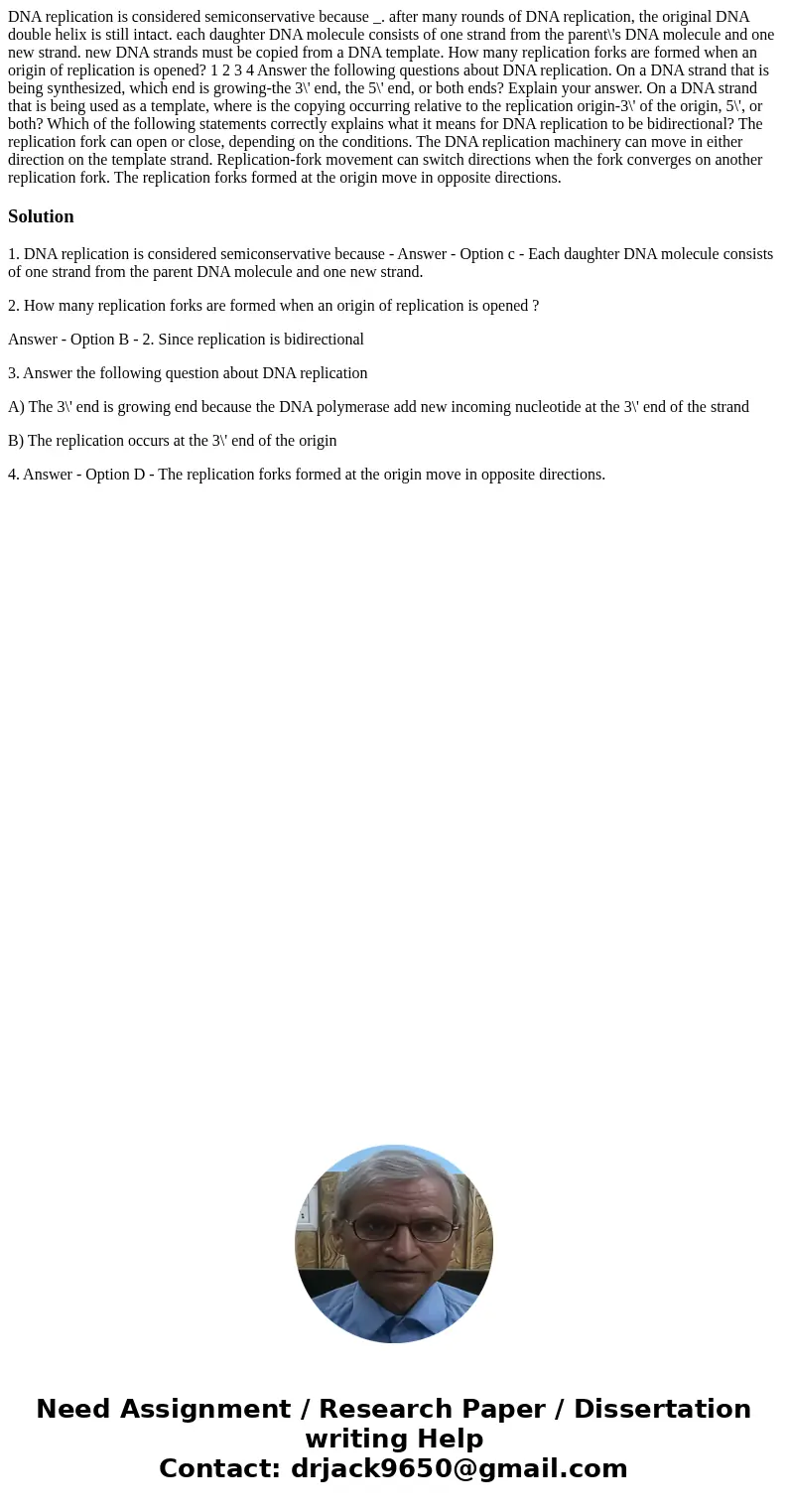DNA replication is considered semiconservative because afte
DNA replication is considered semiconservative because _. after many rounds of DNA replication, the original DNA double helix is still intact. each daughter DNA molecule consists of one strand from the parent\'s DNA molecule and one new strand. new DNA strands must be copied from a DNA template. How many replication forks are formed when an origin of replication is opened? 1 2 3 4 Answer the following questions about DNA replication. On a DNA strand that is being synthesized, which end is growing-the 3\' end, the 5\' end, or both ends? Explain your answer. On a DNA strand that is being used as a template, where is the copying occurring relative to the replication origin-3\' of the origin, 5\', or both? Which of the following statements correctly explains what it means for DNA replication to be bidirectional? The replication fork can open or close, depending on the conditions. The DNA replication machinery can move in either direction on the template strand. Replication-fork movement can switch directions when the fork converges on another replication fork. The replication forks formed at the origin move in opposite directions.
Solution
1. DNA replication is considered semiconservative because - Answer - Option c - Each daughter DNA molecule consists of one strand from the parent DNA molecule and one new strand.
2. How many replication forks are formed when an origin of replication is opened ?
Answer - Option B - 2. Since replication is bidirectional
3. Answer the following question about DNA replication
A) The 3\' end is growing end because the DNA polymerase add new incoming nucleotide at the 3\' end of the strand
B) The replication occurs at the 3\' end of the origin
4. Answer - Option D - The replication forks formed at the origin move in opposite directions.
 Homework Sourse
Homework Sourse